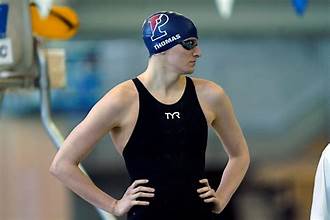
On March 17, 2022, Lia Thomas became the first transgender athlete to be a top winner of a race for the University of Pennsylvania, the 500 meter freestyle. Not only did Thomas win her race, but she also beat Emma Weyant, Olympic silver medalist. This win has stirred controversy over the past year regarding whether or not biological men who identify as female should be allowed to compete against biological females in women’s sports.
Michael Powell of the New York Times interviewed Martina Navratilova on the issue. Navratilova is a retired tennis player and a “champion of liberal and lesbian causes.” However, she claims that for non-biological women to compete in women’s sports gives the athlete an “insurmountable biological advantage.”
Navratilova tells The New York Times, “I played against taller women, I played against stronger women, and I beat them all. But if I faced the male equivalent of Lia in tennis, that’s biology. I would have had no shot. And I would have been livid.” Athletes like Navratilova have similar views due to their long history fighting for recognition in women’s sports.
Purely focusing on science and the genetic makeup of a male vs a female body, the advantages that biological men have are clearly distinguishable. The genetic breakdown of Lia Thomas versus the rest of the competition in the race offers an unfair advantage to Thomas such as faster race times, easier time building muscle due to testosterone levels, and overall more muscle mass; consequently, she was faced with criticisms from biologically female athletes that disagreed with a trans woman competing in women’s sports.
Supporting the opinions of these athletes is a study from the National Library of Medicine evaluating the advantages of biological men in a sport designed for biological women. In this study, the biological differences of men and women are apparent especially since males have “approximately twice the cross sectional area of upper body muscle, and 30% more cross sectional area of lower body muscle relative to females.” Not only are men physically stronger from an athletic standpoint, but their bodies are made to have more muscle than the average woman when trained at the same level.
Estrogen therapy is a popular option that many transgender athletes can try in order to level the playing field for them to compete in women’s sports. Although this form of therapy can increase estrogen levels, that does not change the muscle mass that can be attained easier by a biological man, and “does not affect most of the anatomical structures in the biological male that provide a physiological benefit.”
The National Library of Medicine also proves that “Male physiology cannot be reformatted by estrogen therapy in trans women athletes…testosterone has driven permanent effects.” Not only is there a possibility that estrogen therapy may not be the most effective at what it attempts to do, but it also gives these athletes a false belief that trans women have the same capabilities as biological women.
A study by the National Library of Medicine states that “Given that sports are currently segregated into male and female divisions because of superior male athletic performance, and that estrogen therapy will not reverse most athletic performance parameters, it follows that transgender women will enter the female division with an inherent advantage because of their prior male physiology.”
In contrast, the FINA has recently restricted transwomen from competing in women’s sports unless they take part in hormonal therapy before puberty hits, which is around age 12. This is the only way for it to be fair for a transwoman to enter women’s sports and for the competition to be fair. These medical treatments to suppress production of testosterone allow for transwomen to compete against biological women fairly.
Equality and representation in women’s sports is a topic long fought for in history, yet when sports evolve to allow “representation” such as Lia Thomas swimming for the University of Pennsylvania it prevents biological women from top spots on the leaderboard. When these instances happen, it is clear that biological men who identify as trans women should not be allowed to compete in women’s sports. Although trans women outside of sports may identify as whatever they want and should still be respected, the biological differences cannot be disputed as to whether the competition is equal, especially at elite levels such as collegiate sports.




































